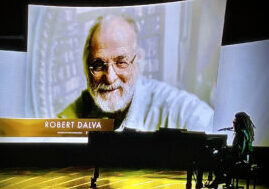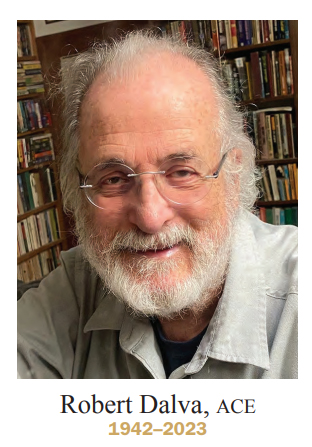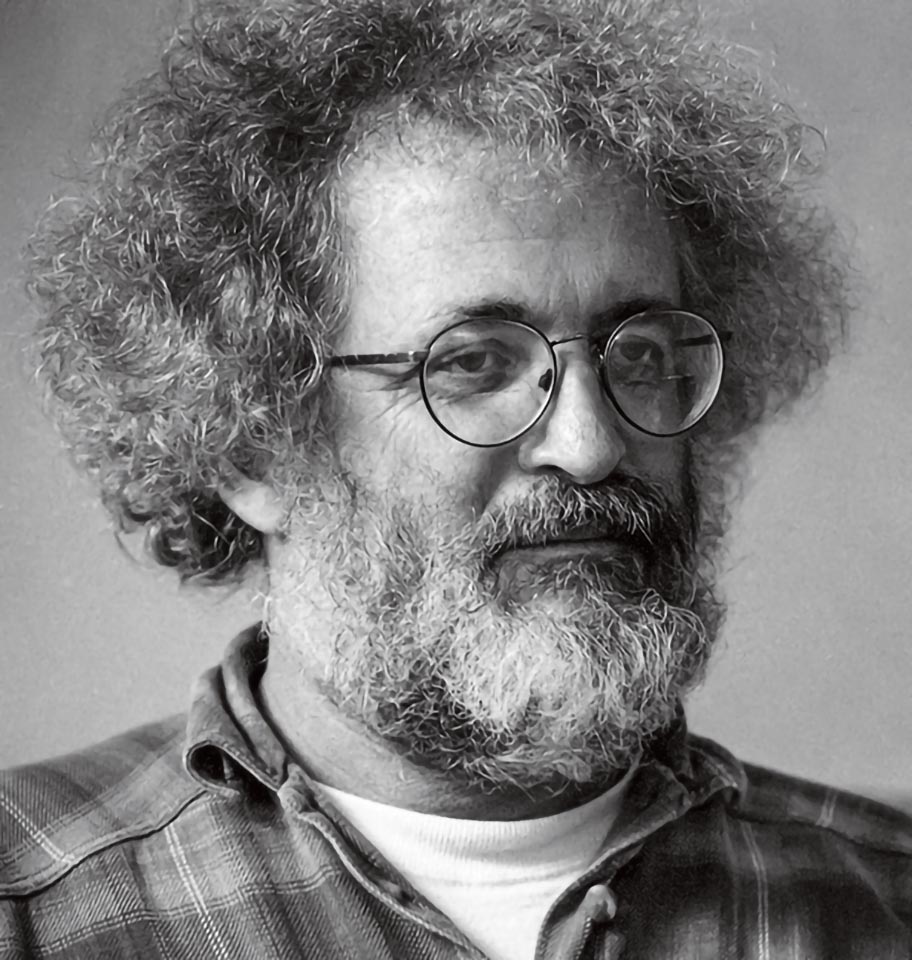hard to imagine that someone invented the timeline. but someone did.
Bob Dalva was that guyBob Dalva
The Man who Invented the Timeline
 Like many us, I have had countless of fantasies of me and the Academy Awards. Winning one, not winning one, presenting one, walking the red carpet, getting a lifetime achievement … you name it. Yet of all those many visions, one that I NEVER imagined occurred at the Oscar ceremony of 2023.
Like many us, I have had countless of fantasies of me and the Academy Awards. Winning one, not winning one, presenting one, walking the red carpet, getting a lifetime achievement … you name it. Yet of all those many visions, one that I NEVER imagined occurred at the Oscar ceremony of 2023.
I was watching on TV, but this was as intimate and genuine a personal connection to the Oscars as it comes. I did not expect it … in any way shape or form. But the Oscars had a brutal bittersweet surprise for me.
 Robert Dalva, director, editor, a professional peer, friend, and at times boss was included in the annual Oscar montage of the dead; the segment that lists a few of the heroes and titans of the film industry who have passed away over the course of a year. In 2023, there was my friend Bob Dalva. I knew he had passed away in January of that year, but still … i had just never imagined this: Oscars. Him. Me. Watching. Being old enough to have friends in that montage.
Now, as Oscar season rolls around again, my goal is to repeat a story he told me, his own special footnote in film editing history – how Bob Dalva invented the timeline. But first, for you those of you who are not editors …the timeline is the basic, essential, all important user interface for not just one edit software, but on every single computer based editing system … ever.
Robert Dalva, director, editor, a professional peer, friend, and at times boss was included in the annual Oscar montage of the dead; the segment that lists a few of the heroes and titans of the film industry who have passed away over the course of a year. In 2023, there was my friend Bob Dalva. I knew he had passed away in January of that year, but still … i had just never imagined this: Oscars. Him. Me. Watching. Being old enough to have friends in that montage.
Now, as Oscar season rolls around again, my goal is to repeat a story he told me, his own special footnote in film editing history – how Bob Dalva invented the timeline. But first, for you those of you who are not editors …the timeline is the basic, essential, all important user interface for not just one edit software, but on every single computer based editing system … ever.
For those of you who are editors, the timeline needs no introduction. It is right there in your face, constantly, all day long, while you edit. How many hours/days/years/decades have I myself stared at the timeline and … never thought about it?
(until Bob told me this story …)To think about the timeline now, lets ask the question: before the timeline, what was there? The answer: there was nothing.
The timeline is absolutely the central feature of every single computer-based editing software ever created. It seems so natural and necessary that it is hard to imagine editing without it. It seems so obvious that we never imagine that somehow, sometime, someone … created it.
Well, someone did.
Bob Dalva was that guy.
 Bob was a true film maker – an editor, cameraman, and director; nominated for an Oscar for editing The Black Stallion (1979) with credits including Star Wars: Episode IV – A New Hope (1977), Captain America: The First Avenger (2011) and Jurassic Park III (2001).
Bob was a true film maker – an editor, cameraman, and director; nominated for an Oscar for editing The Black Stallion (1979) with credits including Star Wars: Episode IV – A New Hope (1977), Captain America: The First Avenger (2011) and Jurassic Park III (2001).
What happened … rewind with me now… was back in 1980. This is before Avid, before Final Cut Pro, before any software-based editing whatsoever. Computers just aren’t powerful enough (yet) to edit picture or sound. This is the very beginning of the digital age, the time of the first mass-market computer ever, the Commodore 64; the first color computer ever, the Apple II. It ships with … gasp … 4k of RAM (not a typo, with RAM of only 4K, albeit expandable all the way up to 48k!!)
But George Lucas believed something could be done with the new technology to make editing easier and faster. He created Droidworks, a spin-off company, and staffed it with a cadre of talented engineers tasked with creating a classy, state-of-the-art non-linear editing system to be called the Edit Droid. They got to work, spent a lot of time and a non-trivial pile of cash and after 6 months they had … not very much. They had a prototype that didn’t work very well and a long way to go. They called in some editors for feedback, including Bob Dalva.
 Bob sat at the machine to put it through its paces, struggled for some time with the clunky interface it had, and soon enough, he asked the engineers how you slip the sound track.
Bob sat at the machine to put it through its paces, struggled for some time with the clunky interface it had, and soon enough, he asked the engineers how you slip the sound track.
“Slip the track?” They didn’t understand.
Dalva explained: picture and sound are different. Editing is about moving them around separately. A gunshot can play before the actor stands up, or after. The dialogue can be slipped to before the phone rings, or after. One character talks, another reacts. Cut to the reaction shot, and the editor slips the audio track earlier or later as desired. That’s … what editing is.
The engineers were puzzled. They weren’t sure they understood.
“Let me draw you a picture” Bob said and grabbed a piece of paper. “Here is a reel of film.” He drew two long parallel lines. “This represents the picture. Lets say you are here.” He drew a dramatic vertical slash.“The film you’ve seen – is on the left. The upcoming – is on the right.”
Then he drew two more long parallel lines.
“Now, here is the sound track. Lets say you want to cut the sound here…” and drew another vertical slash in a different spot, “… and lets say you want to move that up, slip it to here, where the picture cut is.”
The engineers stared at the piece of paper for a while. Now they knew what Bob was talking about. The drawing made it easy to understand. They asked if they could take that sketch with them.
Unknowingly, Bob had invented the timeline.
A month later, the engineers asked him to return. They had a new prototype for him to test.
And lo … !!
The team designing the user interface had folded his sketch into the heart of the machine.
There was this bar between two long parallel lines for image.
There was this other bar between two long parallel lines for sound.
There was this dramatic vertical slash, a position marker, for where you were in the film. To the right, the parts of the film yet to come. To the left, the parts already played.
 “We call it the Timeline.” they said.
“We call it the Timeline.” they said.
And as is often said: the rest … is history.
Interview with Robert Dalva, 2012Obituary in Hollywood Reporter
2) Below is a promo still from location: Bob directing “The Black Stallion Returns”, which is a film I worked on as one of the sound editors. It is my less than humble belief that the computer database list of sound effects that i created for that film was the first such use of computers in cinema post production. (but that is another story.) 3)
3)
 RIP Bob
May his memory be a blessing.
RIP Bob
May his memory be a blessing. RIP, Bob.
May his memory
be a blessing
Related Articles
Don’t Just Teach Math (post)
Want to be a superb teacher? Learn how in under 2 minutes, via the wisdom of



